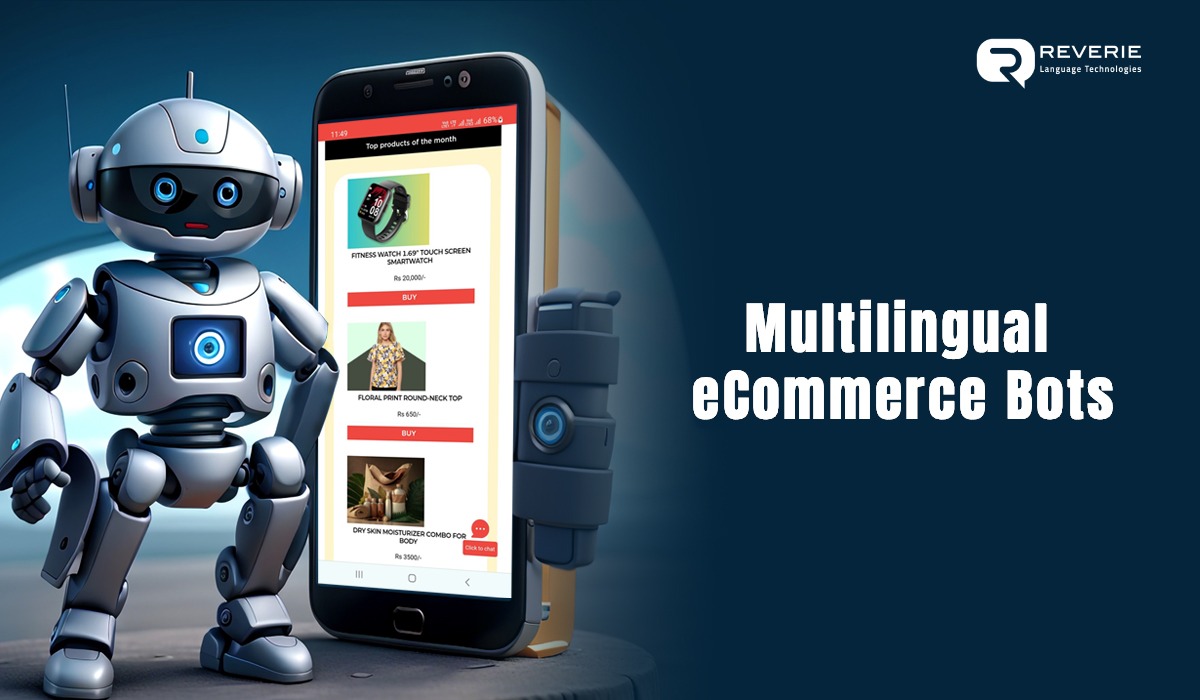When we were kids, many of us were captivated by the Transformers movies and the Autobots. Just like the Autobots’ transformative power in the Transformers series, these chatbots, powered by the BERT (Bidirectional Encoder Representations from Transformers) model, are poised to revolutionize communication. It’s fascinating how something we once saw as pure science fiction is now shaping our reality.
Speaking of transformations, let’s peek into the world of multilingual chatbots. In the ever-changing landscape of eCommerce and D2C, these chatbots are the unsung heroes, bridging the gap between businesses and customers around the globe. Fueled by the magic of conversational AI, these digital assistants aren’t just tools – they are ground-breakers, reshaping the way we interact and do business online.
Building Multilingual Chatbots with Transformers (BERT) and NER for eCommerce & D2C
Ever wondered what goes on behind the scenes of those multilingual chatbots that effortlessly converse with customers in different languages? Prepare to be amazed as we peel back the curtain and reveal the intricate workings of these digital marvels.
At the heart of multilingual chatbots lies a symphony of technology and innovation. This symphony is orchestrated by the power of natural language processing (NLP), a branch of artificial intelligence (AI) that enables machines to understand and interpret human language.
Named Entity Recognition (NER) takes center stage in this technological orchestra. Imagine a chatbot capable of identifying not just words, but entities—names, dates, locations, and more—within a conversation. NER makes it possible, allowing chatbots to extract pertinent information and provide more accurate responses.
But the real rockstar of NLP is BERT—Bidirectional Encoder Representations from Transformers. This revolutionary model has transformed the way chatbots understand language by considering both the context before and after each word. In essence, BERT enables chatbots to grasp the nuances of human conversation with unparalleled accuracy. (being a smaller, faster, and a less resource-intensive model.)
As chatbots interact with users across diverse linguistic landscapes, they rely on a sophisticated blend of NER and BERT to decipher intent, recognize entities, and deliver responses that resonate with users. It’s a delicate dance between technology and human interaction—one that elevates the chatbot experience to new heights.
But the journey doesn’t end there. Behind the scenes, developers continuously refine and optimize these language models, fine-tuning their performance and expanding their linguistic capabilities. It’s a relentless pursuit of excellence driven by a passion for innovation and a commitment to delivering the best possible user experience.
So, the next time you engage with a multilingual chatbot, take a moment to appreciate the technological symphony playing in the background. From NER to BERT and beyond, these chatbots are not just machines—they’re the culmination of human ingenuity and a testament to the limitless possibilities of AI.
Here’s an example to illustrate how a multilingual chatbot using NER and BERT can assist customers in Hindi with their eCommerce/D2C interactions, effectively handling product queries and purchases.
Input Processing:
A user sends a message in Hindi: “मैं जल्दी ही नया मोबाइल खरीदना चाहता हूँ।”
The chatbot receives the message and preprocesses it for analysis.
Named Entity Recognition (NER):
NER identifies entities within the message. It recognizes “नया मोबाइल” (new mobile) as a product category.
NER extracts the relevant information, indicating the user’s intent to purchase a new mobile device.
Language Understanding with BERT:
The preprocessed message, along with the identified entities, is fed into the BERT model.
BERT analyzes the context to understand the user’s intent accurately. It recognizes that the user is looking to buy a new mobile device.
Response Generation:
Based on the analysis, the chatbot formulates a response in Hindi: “बिल्कुल, मैं आपको नए मोबाइल खरीदने में मदद कर सकता हूँ। क्या आप किसी विशेष मॉडल या ब्रांड को पसंद करते हैं?”
Language Generation:
The response remains in Hindi as the user initially communicated in Hindi.
Iterative Interaction:
The conversation continues as the user provides further details or asks additional questions.
At each step, the chatbot employs NER and BERT to understand and respond accurately, guiding the user through the product selection and purchase process in Hindi.
So, what use cases can these bots be used for in the eCommerce and D2C industry?
Customer Support:
Assist customers with product inquiries, order tracking, and returns in their preferred language. Provide real-time support for resolving issues and answering FAQs across different languages.
Product Recommendations:
Analyze user preferences and browsing history to offer personalized product recommendations in multiple languages.
Suggest complementary products or upsell items based on the customer’s shopping behavior.
Order Assistance:
Guide customers through the checkout process, helping them complete their orders smoothly in various languages.
Provide assistance with payment options, shipping details, and delivery timelines.
Language-specific Promotions:
Deliver targeted promotional messages and discount offers in the language preferred by the customer.
Notify users about special deals, sales events, and exclusive offers tailored to their language and location.
Feedback Collection:
Gather feedback and reviews from customers in different languages to improve product offerings and service quality.
Conduct surveys and satisfaction assessments to understand customer sentiments across diverse linguistic demographics.
But let’s cut to the chase—what’s in it for businesses? Think improved CSAT scores, loyal local clientele, and a competitive edge in the Indian marketplace.
Multilingual chatbots aren’t just fancy tech—they’re strategic investments that pay dividends in customer satisfaction and loyalty; besides reducing operational costs.
To embrace the power of conversation, and watch as your retail business transcends boundaries using multilingual bots – <Contact us>


